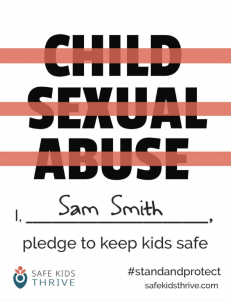Read the Report
Home / Read the Report
Long Term Effects
In addition to the more near term physical and behavioral signs of child and youth maltreatment, there is also substantial evidence that the effects of child abuse and neglect can have lifelong consequences. 1 The Centers for Disease Control (CDC) in partnership with the Kaiser Permanente Health Appraisal Clinic in San Diego determined a cause and effect relationship between early childhood trauma (including child abuse and neglect) and later life health and well-being. The Adverse Childhood Experiences study (or ACEs) included more than 17,000 Health Maintenance Organization (HMO) members undergoing a comprehensive physical examination who chose to answer a questionnaire that asked them to provide information about experiences of abuse, neglect, and family dysfunction while they were growing up, as well as the details of their current health status and behaviors. The study findings suggest that certain childhood experiences are major risk factors for the leading causes of illness and death as well as poor quality of life in the United States. Progress in preventing and recovering from some of the nation’s worst health and social problems is likely to benefit from understanding that many of these problems arise as a consequence of early childhood trauma.
The ACE study questionnaire asked respondents to indicate whether they had experienced any of three categories of childhood abuse: recurrent psychological (emotional) or physical abuse, or contact sexual abuse. Questions about exposure to four categories of household dysfunction during childhood included: exposure to substance abuse (by a household member); mental illness (someone who was chronically depressed, institutionalized, or suicidal); violent treatment of a mother or stepmother; and criminal behavior in the household. Respondents were defined as exposed to a category if they responded “yes” to 1 or more of the questions in that category. Thus the possible number of exposures ranged from 0 (unexposed) to 7 (exposed to all categories). 2
The researchers then conducted statistical analyses of the relationship between the self-reported level of exposure to childhood abuse and family dysfunction (0-7) and the health issues that the physical examinations revealed in the respondents. The results showed a strong and consistent relationship between the level of exposure to childhood trauma and numerous organic diseases. For example, a person with and ACEs score of 4 or higher is 260% more likely to have chronic obstructive pulmonary disease (COPD) than a person with an ACEs score of 0. Similarly, persons with ACEs scores higher than 4 were found to be 240% more likely to have hepatitis, 250% more likely to have a sexually transmitted disease, and 460% more likely to suffer from depression than persons with no exposure to childhood trauma. Persons reporting a high ACEs score of 7 were found to be up to 360% more likely to suffer from coronary artery disease than those reporting low or no exposure to childhood abuse or family dysfunction.
The results indicate that child abuse and neglect – either by themselves or in combination with other elements of family dysfunction – are related to multiple risk factors for several of the leading causes of death in adults in the United States, and that the impact of these experiences on adult health status is strong and cumulative.
Further research spun off from the ACEs study has found similar relationships between childhood trauma and normal neurological and hormonal function. In other words, exposure to childhood trauma can actually cause long term changes in brain chemistry and function, as well as in the body’s hormonal balance. These, in turn, have been linked to appetite, the way the body ultimately distributes abdominal fat, the regulation of blood pressure, immune function, inflammatory responses, the regulation of sleep/wake cycles, and the formation of memory.
It is clear from these studies that child abuse is bad for normal health and development in a number of ways. Beyond the psychological and emotional effects that we have come to understand as the consequence of childhood abuse and neglect, we are now learning that its effects are lifelong and life threatening in ways that were unimaginable only a few years ago. Yet the authors themselves, in the closing remarks of the study, point to a number of societal and community strategies as essential in combating the problem of adverse childhood experiences – the very first being strategies that include the prevention of their occurrence.
1 Felitti VJ1, Anda RF, Nordenberg D, Williamson DF, Spitz AM, Edwards V, Koss MP, Marks JS., Relationship of childhood abuse and household dysfunction to many of the leading causes of death in adults. The Adverse Childhood Experiences (ACE) Study (1998 May) American Journal of Preventive Medicine;14(4):245-58.
2 In subsequent ACEs studies, additional categories were added.
- Acknowledgements
- Executive Summary
- Introduction
- How to Read This Report
- Mission & Purpose of Taskforce
- A Brief History of How the Taskforce Was Organized
- The Charge of the Legislative Language
- Key Sections
- Section 1: Developing Policies and Procedures for Child Protection
- Section 2: Screening and Background Checks for Selecting Employees and Volunteers
- Section 3: Code of Conduct and Monitoring
- Section 4: Ensuring Safe Physical Environments and Safe Technology
- Section 5: Recognizing, Responding to, and Reporting Allegations and Suspicions of Child Sexual Abuse
- Section 6: Training About Child Sexual Abuse Prevention
- Additional Considerations
- Applying the Framework: A Five-Year Plan
- Appendices
- Section-Specific Appendices
- Downloadable Resources

Take the Pledge to Keep Kids Safe
Join us and commit to learning how you can protect the children you serve.
Sign Up to Access Your Learning Center
Customized child sexual abuse prevention guidelines to meet the unique needs of any organization that serves children.
- Evidence-informed guidance
- Actionable prevention steps
- Keeps track of your progress
- Tailored learning tracks


